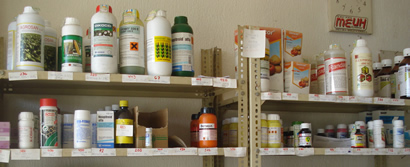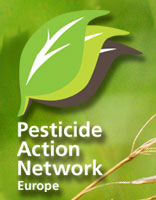Risk assessment for harmful substances is done for decades now on a substance-by-substance basis. For a scientific point of view this is a fundamentally flawed approach since in everyday life no-one is exposed to a single substance but to a multitude of substances at the same time through body burden, home, food, air, personal care, etc. PAN-Europe and its members have been trying to include cumulative risk assessment in decision-taking for many years.

USA was the first to include cumulative risk assessment in legislation in a revision of the FQPA in 1996. Methods to assess these effects for organophosphates were put in place in 2002. Information can be found on the website.
Methods to assess the effects are readily available in open literature for years. Dutch consumer organisation “Consumentenbond” and “Natuur en Milieu” published in 2001 a study “Have we lost our heads” using a probabilistic modelling (Monte Carlo, attached) and a Relative Potency Factor-approach demonstrating the cumulative exposure of organophosphates and carbamates showing how many of the consumers are exposed at a high level to this group of neurotoxic substances.
Finally in 2005 the EU revised the Residue Directive and changed it into a Regulation (396/2005) and made cumulative risk assessment mandatory “as soon as methods to assess such effects are available” (art. 14.2.b). EFSA is the scientific body of the EU to advice on methods. EFSA organised a “Scientific Colloquium” (2006) concluding not so much on a lack of methods but more on cooperation and harmonisation. The Colloquium was ‘invited-only’ meaning a large delegation of agrochemical industry was invited but no-one from NGO’s. Next step would be a framework developed by EFSA. Up to now however a framework is missing.
What happened was EFSA PPR-panel coming up with an Opinion (2008) which started by saying :
The PPR Panel is of the opinion that ideally, risk assessments for chemicals, whether individually or in combination, should consider all sources (e.g., plant protection products, veterinary drugs, human medicines), pathways (e.g., food, drinking water, residential, occupational) and routes (ingestion, dermal, inhalation) of exposure that could contribute materially to a person’s total exposure. Though the principle sounds good, “ideally” might mean we never get there. The PPR-panel concluded the pesticide groups Organophosphates, together with Carbamates, Triazines, Chloroacetanilides, and Carbamates alone, all can be assessed for pesticide residues in food, the methods to do so are available according to the PPR panel. Still this is not the final step because EFSA now will draft concrete methods group by group.
Because EFSA is an independent Authority Commission can’t act and write a Regulation on cumulative methods unless EFSA published their final opinion. And according to Commission there is no way to speed up EFSA because they are independent. EFSA now is focussed on Triazines as the first group to establish methods. This looks strange because for the big group of Organophosphates methods are there for many years. Looks like EFSA doesn’t take the risks for public health serious by delaying the process and Commission doesn’t push very hard either.
In 2009 EFSA PPR-panel published a next opinion on cumulative risk assessment on triazoles. Conclusion is methods cannot be used on a routine basis and more research is needed. This will take at least till 2012 to finalise. This research will mainly focus on whether a deterministic or probabilistic approach for risk assessment should be used. it looks like EFSA wants to control this issue completely and not only do risk assessment but also risk management, and taking time showing they don’t consider it a real health issue from the start.
Others have more worries about cumulative effects than EFSA has. A Danish communication on cumulative effects of chemicals for children was adopted in Environmental Council October 2009.
DG Environment also is worried more than EFSA and commissioned Prof. Kortenkamp to do a state-of-the-art review on cumulative and synergistic effects of chemicals. He urges EU to install binding regulation for all chemicals, not only pesticide residues, and move quick to assess the risks because the methods to do so are available.
Useful information



